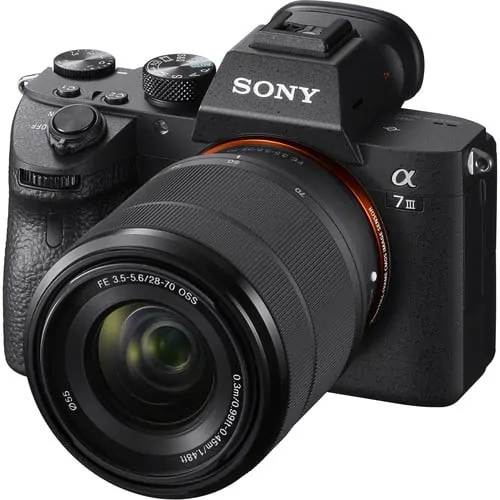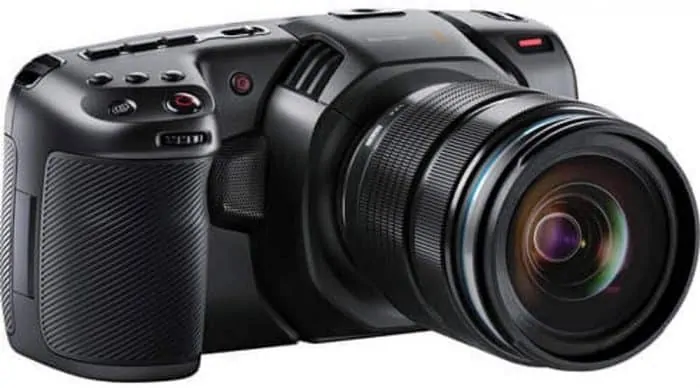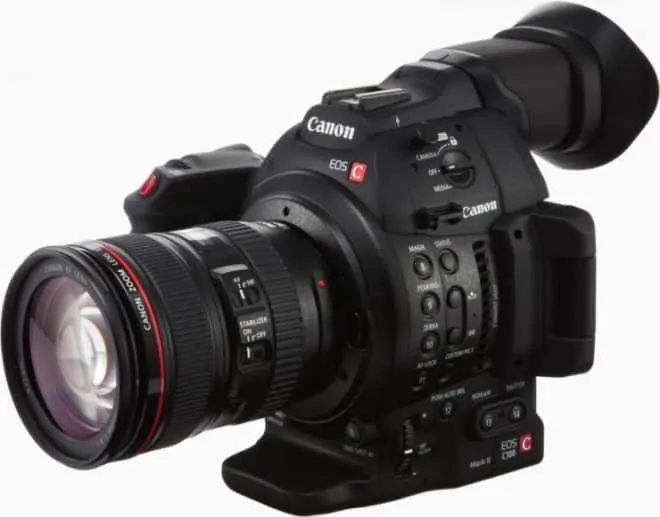Update: Added Panasonic Lumix GH6.
Note: The Panasonic Lumix GH5 (and now the GH6) has become my all-around hero camera for video. It’s utterly fantastic. I’ve been shooting with the GH5/GH6 for Stark Insider (interviews, short films, travel videos) for the past few years, and it’s really an impressive camera, most notably the IBIS (you can use non-stabilized lenses handheld) and 10-bit codec (better for color grading). At only $1,398 USD this is an impressive deal given the feature set. But I think it can even go toe-to-toe with cameras costing much more. You can follow my articles with reviews, tips & tricks, videos about the GH5 here on Stark Insider.
If you’re interested in shooting high quality video using a DSLR or mirrorless camera you are in luck: the world is your oyster and awash with many quality options.
But with so many choices it can be hard to decide which camera to buy — and, by the way, we should all agree that even that Android or Apple iPhone in our pocket or purse could do be perfectly suitable for the task at hand.
After shooting video for a living since 2006 here’s my picks for the top 5 best DSLR and mirrorless cameras if you’re planning to do the same, or even as a fun, rewarding hobby.
To cut to the chase, here’s my top 5 best DSLR and mirrorless camera picks (read on for the long edition):
Stark Insider Top 5 Summary:
Best DSLR and Mirrorless Cameras for Shooting Video
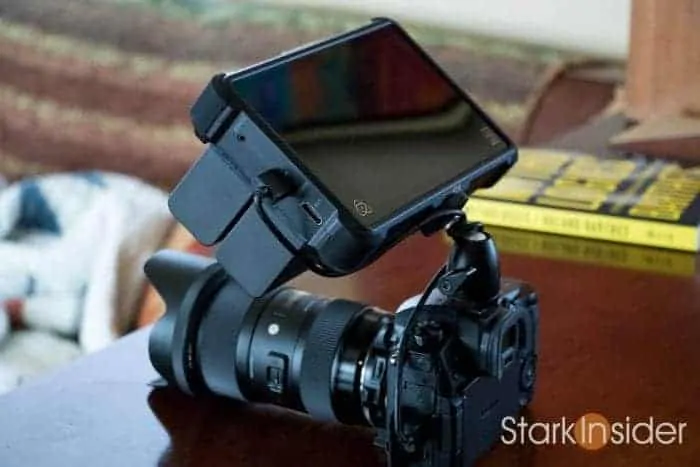
| CAMERA | BEST FOR… | IMAGE SENSOR | STANDOUT FEATURE | PRICE (USD) | BUY |
|---|---|---|---|---|---|
| Canon EOS 80D | Ease-of-use | 24MP APS-C |
DPAF Auto-Focus |
$899 | Amazon |
| Sony Alpha a7 III | Filmmakers, Music Videos | 24MP Full-frame |
Low light performance | $1,698 | Amazon |
| Panasonic Lumix GH5 (and GH6) | Filmmakers, Music videos, Wedding Videography | 20MP Micro Four Thirds |
In-body image stabilization (IBIS) | $1,295 | Amazon |
| Blackmagic Pocket Cinema Camera 4K | Serious filmmakers interested in color grading, Film school | Full-size 4/3 | Blackmagic RAW (BRAW) | $1,295 | Amazon |
| Canon Cinema EOS C100 Mark II | Documentary, Events | 8MP Super 35 |
Pro XLR Audio | $2,699 | Amazon |
Buying a DSLR or Mirrorless Camera for Video
Over the last few years the market has seen major advances when it comes to video. Now there are several (relatively) low cost cameras that can shoot high resolution formats such as 4K and 6K, record well in low light with minimal noise, and, even, track a moving subject thanks to accurate, continuous auto-focus (a feature previously only available on camcorders, and not DSLR cameras).
With so many video-enabled DSLR and mirrorless cameras available today making the right choice can be tricky and confusing. And the research exhaustive. If you’re like me you tend to over-research; Google-ing until the wee hours of the morning, wondering, and wondering over and over again, which camera to buy.
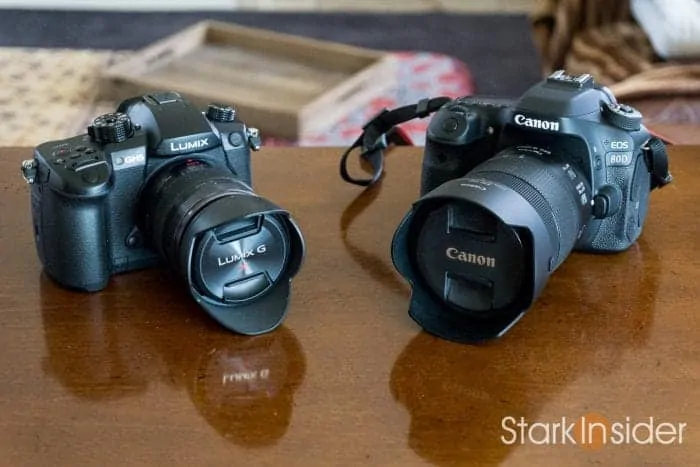
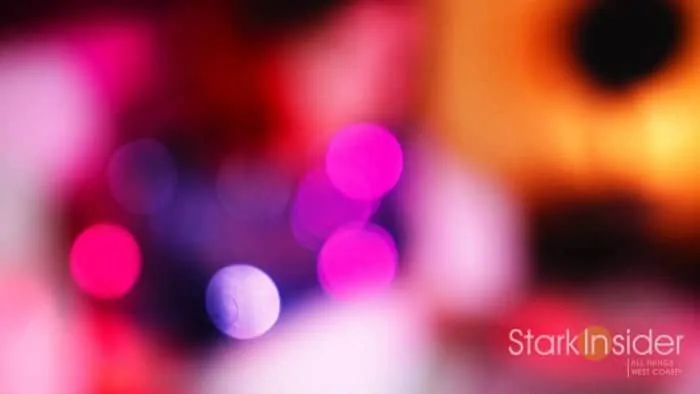
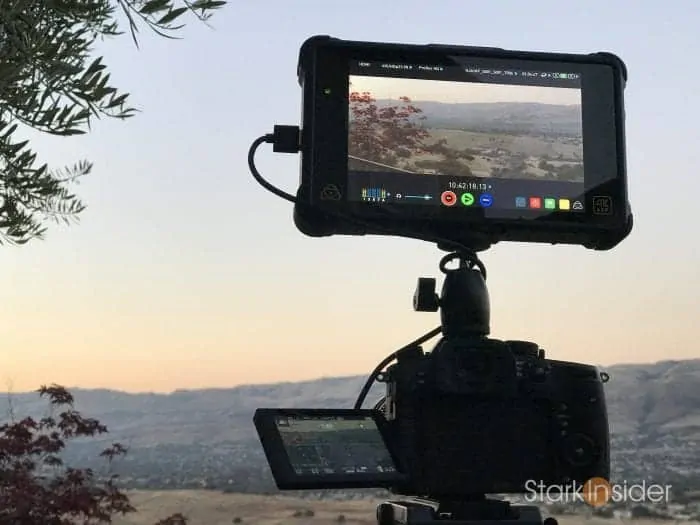
So, which camera is the right choice?
Only you can know for sure. First, I’d suggest you determine the intended use for the camera:
Is it for filming a narrative, where each scene can be carefully composed and lit?
Or is it something you’ll use to capture live action, maybe “run-and-gun” style, with only one chance to get it right?
Or, will it be just a bit of a play thing, perhaps to take higher quality footage of random things around the house and neighborhood, or at birthday parties and other family events?
Knowing the intended purpose, and then establishing a budget should make short-listing and ultimately choosing a DSLR or mirrorless camera much easier.
As for me, I’ve been shooting video here on Stark Insider, at least professionally, since about 2006. I started with a Canon Vixia Camcorder, then took up the DSLR video revolution with open arms with the intro of the Canon Rebel T2i (the then sweetheart 5D Mark II was out of my budget). After that I upgraded to the EOS 60D to 70D and eventually 80D. Now I shoot on the fabulous Panasonic GH5. Not once has shooting on, call it, a consumer or even prosumer camera, inhibited our ability to get access to actors, backstage Broadway shows, and live concerts.
I’ve been fortunate over the years to get interviews with the likes of musician Colbie Caillat, actors Ben Stiller, Nicole Kidman, Emma Stone, James Franco, and Elle Fanning; and gain access backstage at Broadway shows touring across San Francisco. But: big deal and enough with the name dropping. You don’t need any of that necessarily — my favorite thing to do is to grab the GH5 and with nary a care or plan in the world go shoot an arthouse short film with Loni Stark. I always remind myself that the camera alone won’t make or break me. The creative process, to me, is what matters most. Learning from it is a very satisfying feeling and engaging life pursuit.
Consider:
I highly recommend you not think that the bigger or the more expensive the camera rig, the better and more important you’ll look. Forget about that… dare I suggest, get your shots, and instead hone in on composition, story-telling, uniqueness.
Also, something I’ve learned over the years is that often a big camera — such as a shoulder-mounted rig — can often intimidate people (though not professional actors, for example). So if you value authenticity, and natural, spur-of-the-moment reactions from everyday folks it’s often hard to beat a discrete camera like a Canon DSLR, or small Sony mirrorless camera.
With that, here’s my short-list of the top 5 cameras I believe you should consider for shooting video. Of course, there are many more to evaluate and read about, but at least in my experience, these are some of the very best on the market today.
Clinton Stark’s Top 5:
Best DSLR & Mirrorless Cameras
for Shooting Video
1. Canon EOS 80D
(UPDATE: also thumbs-up for the 4K step-up model, Canon EOS 90D)
Buy: Amazon
Best for: Ease of use, rugged applications, “run-and-gun” and when auto-focus is needed (e.g. live action).
I rank the Canon EOS 80D #1 for a reason: it’s a quality workhorse that has never failed me. The video quality is excellent. And, because it uses the ubiquitous Canon EF lens mount, there’s a barnyard of lens options. Price-wise, it’s a bargain. You needn’t spend thousands for a full-frame camera to get film-like footage. Put quality glass on it, such as the remarkable Sigma 18-35mm ART lens, and prepare to be blown away by the results. Yes, I love this camera (as I did its successor the 70D).
One key feature of the 80D that might make it ideal for you versus my other picks below is its trick auto-focus. Canon calls it Dual Pixel CMOS Auto-Focus. This handy features allows you to use the LCD screen to mark a subject — from there the 80D will automatically track it wherever it moves. It works extremely well. Note that to get best results you should use one of Canon’s new “STM” lenses. I have the Canon 18-135mm STM kit lens on my 80D about 90% of the time (Clint’s Top 5: Best lenses for shooting video with a Canon DSLR with video examples), and it can get me close-ups, decent wide shots, and with stabilization I can get acceptable handheld work too.
Other pluses for the 80D include: long battery life, standard SD card slot for storage, and wi-fi (great for transferring photos to your smartphone while on the go).
Advanced tip:
The 80D supports custom picture profiles (you can upload them to the camera from your computer). I use CineStyle by Technicolor (yes, the famous “Technicolor” company of film fame) which results in a flat, low contrast image. Then I apply a LUT (look up table) in post-production to process the image. And then I use the FilmConvert plugin (which works for a range of Cameras including Sony, Canon, Panasonic, Blackmagic, RED, Nikon). Why bother? You’ll get slightly more dynamic range (or perceived dynamic range) and you’ll be able to get more of a film look and avoid the dreaded over-sharp camcorder look… to me, all worth the effort.
Canon EOS 70D/80D Video Examples:
“Wrong’s What I Do Best” – San Francisco Art Institute
Canon EOS 70D, Canon 18-135mm STM lens, Sigma 18-35mm ART 1.8 lens
“Morado” – Short film shot in Loreto, Baja California Sur, Mexico
Canon EOS 70D, Canon 18-135mm STM lens, and lots of mosquitos and a random, purple scarf
“Glamping” – Treebones at Big Sur, California
Canon EOS 70D, Zoom H1 recorder with lavalier, Sennheiser MKE 600 shotgun microphone, Genaray LED-6500T 209 LED Variable-Color On-Camera Light
“Opera!” – San Francisco Opera
Canon C100 II A cam, Canon EOS 80D B cam, Zoom H1 recorder with lavaliers, Sennheiser MKE 600 shotgun microphone, $30 dolly with wheels
“Best’s So Lonely” – An ’80s Music Video Homage
Canon EOS 70D, Canon 18-135mm STM lens (black & white conversion and grain added via FilmConvert)
* Most of my videos are processed using FilmConvert, Adobe Premiere Pro, Adobe Audition (for sound), some de-noising using the Neat Video plug-in.
2. Sony Alpha a7 III
Buy: Amazon
Best for: Low light, landscape and videographers that need wide shots, filmmakers interested in depth of field and cinematic footage.
The Sony Alpha a7 III took the market by storm. And for good reason. Sony’s powerhouse performer comes in a tiny package, but offers stunning, cinematic 4K performance. Plus, the a7 III may well be one of the best low-light cameras of all times thanks to its beautiful full-frame sensor. Check out some of the reviews and you might be stunned to learn that this camera can literally see in the dark. That alone might make it the perfect choice for you, especially if you shoot videos, say, at night, or in dark theaters, or at dimly lit weddings and receptions. Feel free to crank ISO on the a7 III — you may be surprised at how much light you can add to a dark scene without introducing noise (the same can’t not be said, sadly, of the Canon EOS 70D/80D/90Ds of the world).
Also, important to note about the a7 III is that this is a “full-frame” camera. This essentially means the sensor captures images in identical size to a traditional 35mm camera. So, a 50mm lens captures images at 50mm. Contrast that to a “crop sensor” such as the aforementioned 70D/80D (APS-C) that will capture an image zoomed in or “cropped” — in the case of the 70D the image is magnified by about 1.6, hence using a 50mm lens results in a images equivalent to 80mm. I’m over-simplifying here, but hopefully you get the idea (Google for more in-depth information on the subject of full-frame vs. crop sensors to learn more).
One potential issue with the a7 models in general: “Jello.” Or, an aberration also known as “rolling shutter.” That means, simply, if you do fast pans, say from left to right, the image will get warped and distorted, prompting many to refer to the footage as Jello. So, heads up, if you do a lot of action work, be it sports or dynamic street videography the a7 III may not be for you (hint: look for a camera with a “fast sensor readout”).
Sony priced the a7 III very competitively. Retailing for only $1,998 you might think otherwise, but keep in mind its nearest competitor is likely the Canon 5D Mark IV, another full-frame camera, yet priced about $1,000 more (Canon has since dropped the price).
If I were just getting started in video, and wanted a high performance camera, and had yet to invest in Canon EF lenses, I might very well make the Sony a7 III my first choice for best overall video camera. It is, in a word, phenomenal. Then again, about that GH5 that comes next…
Advanced tip:
Add something like the Atomos Ninja V 4K external recorder, and you’ll be able to record higher bit rate 4K video using the a7 III. Although you may not want (or be able to afford) to do this right away, it’s nice to have the option. Think of it as future-proofing your investment.
3. Panasonic Lumix GH5 Mirrorless Camera
(tip: also consider the GH6 if your budget allows)
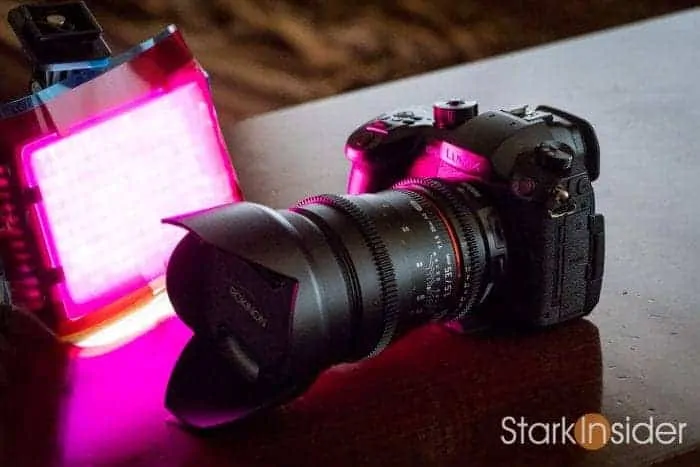
Buy: Amazon
Best for: capturing 4K footage without requiring a rig,
Another relatively new camera that has upended the <$3K market segment for DSLRs and video cameras. The big headline with the Panasonic Lumix GH5 is: internal 10-bit 4K recording. You can record to 4K without the need for an external recorder (as the a7S, above, requires). That’s pretty impressive. Really impressive. Whether or not you actually need 4K capability today is of much debate. Sooner or later, though, it will become the standard. No question, just a matter of time — when, in the history of video, have we ever not moved to higher resolutions?!
Like the a7S the GH5 is mirrorless. Because no mirror is used, the overall camera is compact compared to something such as–my sweetheart–the Canon EOS 70D. Lenses for mirrorless models such as the GH5 and a7S also tend to be quite small by comparison. So if portability matters to you that’s something to keep in mind.
Note: the Panasonic Lumix GH6 is also a great choice, essentially refining everything that makes the GH5 one of video shooter’s favorite cameras.
Shot on Panasonic GH5:
‘Crazy or Die’ Short Film by Clinton and Loni Stark
Many camera sites and enthusiasts compare the a7 III (and the a7S II) to the GH5 — both hit the market within about a year, are fairly close in price, and offer high performance mirrorless camera bodies. Comparing the two could be as simple as this: want low-light performance go with the Sony a7 III; want internal 4K with 10-bit color, outstanding IBIS (in-body image stabilization) and good high speed frame rate options go with the GH5. Of course, in reality your decision will likely be based on many more factors. My advice: don’t sweat it too much… buy one already, and start shooting, and shooting and shooting. Both will produce amazing footage. Neither will prevent you from getting your project done. Get your gear, then shift your mental cycles to more important things: capturing high quality sound, telling a compelling story, framing your shots creatively, etc.
4. Blackmagic Pocket Cinema Camera 4K
Buy: Amazon
Best for: Narrative filmmakers, advanced users comfortable with color correction and grading, those interested in achieving the most cinematic image possible without breaking the bank.
Oh cinema, oh my.
Footage out of the Blackmagic cameras is simply divine. Gorgeous. Filmic. Dynamic.
No question, Australia-based Blackmagic Design has given us a camera that is beyond reproach when it comes to capturing 4K images that rival the most expensive cameras used to produce Hollywood blockbusters (i.e. Arri Alexa). A lot of that has to do with something called “dynamic range” – that is the number of stops, from dark to light, the sensor in the camera is capable of capturing. The more the better. This Blackmagic Pocket Cinema Camera 4K, for example, captures about 14 stops of dynamic range. My trusty Canon EOS 80D fares less well, capturing about 10 stops. What does this mean practically? It means that with fewer stops of dynamic range, the image will have less detail in the highlights (bright whites) and shadows (dark greys and blacks). Filmmakers care about this a lot. For run-and-gun people, like me, it’s not as important – this is especially true if you deliver to the Web (YouTube, Vimeo) and have no designs for your work to appear on a 120 foot big screen.
What you get with the BMPCC 4K: best-in-class film quality footage, lots of dynamic range, an inconspicuous body that looks like an innocent point-and-click camera (great for capturing footage in museums, restaurants, or in top secret locations!)
What you also get: poor battery life, quirky ergonomics, below average audio quality, short recording times, and a less established brand.
Shot on Blackmagic:
“Movie Star” – A Celebration of Film by Clinton and Loni Stark
If you want Blackmagic, you probably already know what you’re getting, and will likely adore the thing to bits. For most mainstream video shooters, the Blackmagic will be a novelty, and a niche camera. For the price, again, an astounding product. I’m especially interested to see what Blackmagic does with its next iteration of these cameras.
Icing on the cake: Blackmagic cameras come with a free copy of DaVinci Resolve color grading and editing software.
5. Canon Cinema EOS C100 Mark II Camera
Buy: Amazon
Best for: Documentary shooters, low budget indie filmmakers, those looking for their first “pro” level Super 35 cinema camera.
Okay, okay, this one is not really a DSLR. Instead the Canon C100 Mark II Super 35 cinema camera is a full-on, professional camera (though entry level in Canon’s range that includes the step-up C300 and C500) designed purely for shooting video. I wanted to include it here to demonstrate how much value can be had from other cameras on the market (as mentioned above) for a lot less money. Of course, we’re not comparing apples to apples. There are many reasons why the Canon C100 may or may not be worth the significant jump in price.
If you’re an indie filmmaker or documentary producer, chances are you already know about this camera. I’d call it in an all-in-wonder. It has a Super 35 sensor (which downsamples 4K automatically to efficient and beautiful 1080p HD files) so you can get that vaunted cinema-look. There’s true-to-goodness XLR inputs for capturing pro audio, the battery goes forever, and the ergonomics are perfect for run-and-gun, or setting up in a rig for shooting scenes for narrative projects. And, the C100 performs well in low light. Add all that together, and you have a tantalizing product for those on a budget who don’t want to compromise on image quality.
Shot on Canon C100 Mark II:
“Broadway Under the Stars” – Sonoma, California
Canon C100 II EOS Cinema Camera, Zoom H1 field recorders with lavs, Sennheiser MKE 600 shotgun microphone, Atomos Ninja Blade external recorder
“A Gift From Me To You” – Celebrating 10 years of Stark Insider
Canon C100 II EOS Cinema with Sigma 18-35mm ART F/1.8, Blackmagic Micro Cinema Camera with Panasonic Lumix 12-35mm F/2.8 (Chapter 3 only), Genaray LED lights, FilmConvert, LED strobes, a black box, stuffed toys, and one majorly willing wife
The C100 is the bottom rung on Canon’s cinema line, but don’t let that fool you. The step-up C300 is very popular for television productions, especially across the U.S. and the U.K. Shows such as Once Upon a Time regularly use it, as do news and entertainment segments for outlets such as CNN and PopSugar. Unfortunately, the C300 retails for $14,999! But, guess what? The C100 uses the same 4K Super 35 sensor… so you’re actually getting a lot of bang for the buck. Again, this is entry pro level stuff, so if you’re eyes are bleeding, then, well, just know you can do perfectly fine with some of my other picks above (hint: Panasonic GH5 or Blackmagic or Canon EOS 70D/80D, and you’re off to the races).
Conclusion: In the end, these are just (great) tools

A reminder to all of us: these are all just tools. These are all just tools.
When it comes to the creative process they are probably the least important part of the puzzle. There are so many important aspects to creating something people will want to watch: convincing acting, quality lighting, nicely composed shots, a compelling plot, among a very long list.
So, take a deep breath. Don’t do what I and so many others tend to do from time to time and get locked in paralysis-analysis. Comparing sharpness shoot-outs. Scanning forums for this thing vs. that thing; thinking deeply and lovingly over which camera to buy, and in the process ignoring your spouse’s adoration for Taylor Swift’s latest video. Just shake all that off I say.
Popular Camera Articles
- Canon EOS R5: 5 other video-centric cameras you can buy now for less money
- Top 10: Best lenses for shooting video on the Panasonic GH5
- Sigma 18-35mm f/1.8 Art lens is an outstanding lens value (Highly Recommended)
- 5 best lenses for shooting video with a Canon DSLR camera (with video examples)
- First Impressions: Panasonic S5 full-frame 4k camera, by a GH5 video shooter
A few years back, when I was just getting started in video production, someone told me “don’t got too crazy at first.” He kindly suggested that I should just buy a Canon Rebel T2i and a simple kit lens (which I did) and go from there. Learn as you go. Buy a new mic eventually. Maybe another accessory a few months later.
In other words: don’t be that new guy who shows up at the gym with shiny new runners, cool Nirvana shirt, new iPhone taped to his arm, and super-brand-new sweat bands.
Rather, get a modest initial amount of gear. Use it, learn it. Then expand as you increase your expertise. Otherwise, best case you might overwhelm yourself, and, worst case, you might look like you’re trying too hard. Either, likely a formula for middling results.
5 Highly Recommended DSLR & Mirrorless Cameras for Shooting Video
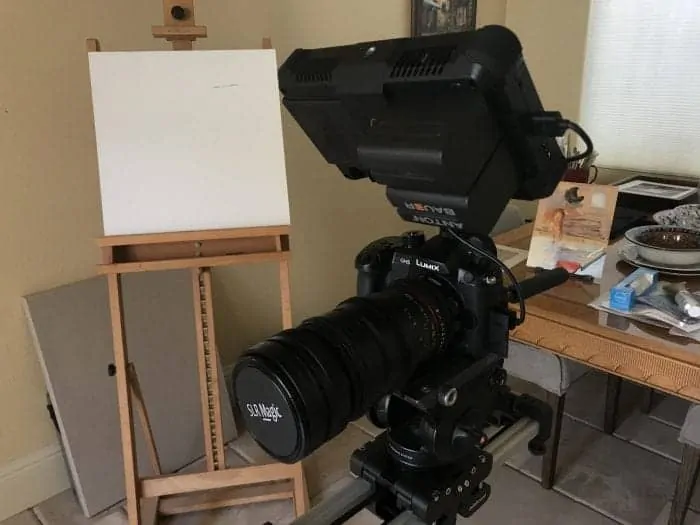
Good news: you can’t go wrong.
All five of these are extremely capable cameras. Ranging in price from about $800 to $4,000 there’s a camera here for everyone — from those who are just getting started with video to those who are experienced and looking to take their video productions to the next level.
Top 5:
Best DSLR and Mirrorless Cameras for Shooting Video
By Clinton Stark
1. “The All Rounder”
2. “The Full-Frame Cinematic King of Low Light”
3. “4K or Bust Hybrid”
- Panasonic Lumix GH5 (still a great option even today!)
- Panasonic Lumix GH6
4. “The Filmmaker’s Choice” aka “The Baby RED”
5. “Documentary Champ”
Some final thoughts on these cameras…
… If I were serious about video, wanted something compact and wanted to spend less than $1,400 I’d get the Panasonic Lumix GH5. There’s just about nothing it can’t do, and thanks to firmware updates over the years, Panasonic continues to spoil us with more and more features. (Also, new models to consider: Fujifilm X-S10, Sony Alpha a7S III, Canon EOS R5, Panasonic Lumix S5)
… If I were shooting a narrative film, I’d go Blackmagic or RED. They’re trickier to use, require proper lighting and post-production workflow but depending on your project the results could be worth it. I used a RED Dragon and Rokinon prime lens to shoot And It Hurts with Loni Stark — a short promo for Stark Insider:
… And if I were shooting a proper documentary I’d go Canon C100 Mark II (or newer Canon C200 or Canon C70 if budget allowed) or maybe Sony FX9.
Now it’s Up to You…
Canon EOS 70D/80D/90D, Sony a7 III (and a7s III/a7SR III), Panasonic Lumix GH5 (and S5), Blackmagic Pocket Cinema Camera 4K and Canon C100 Mark II Cinema Camera…
… all superb cameras for shooting video, each with their own strengths.
Take your pick — or simply use your Android phone or iPhone.
And get rolling. The world awaits you.
Friendly reminder: Above all else, your creativity is more important than any tool.
Happy shooting!


